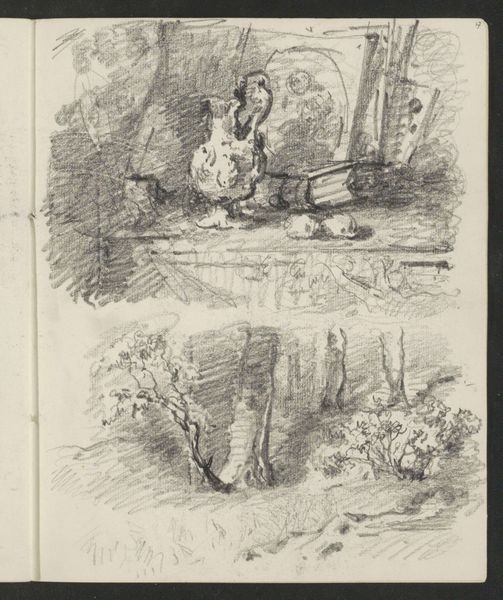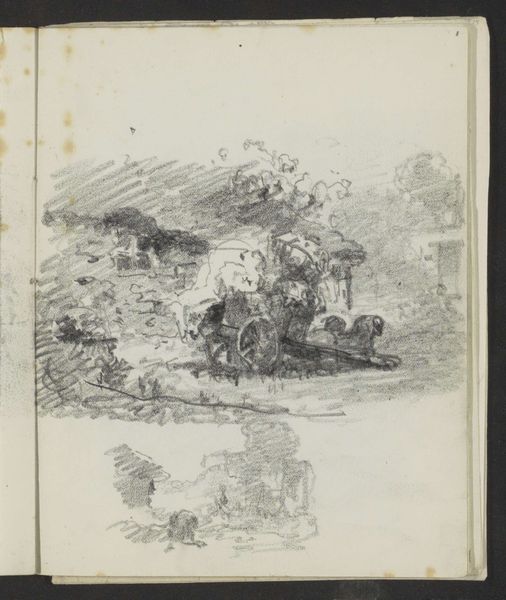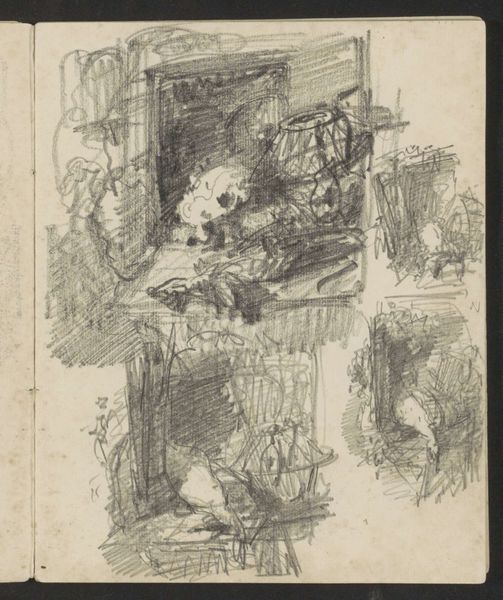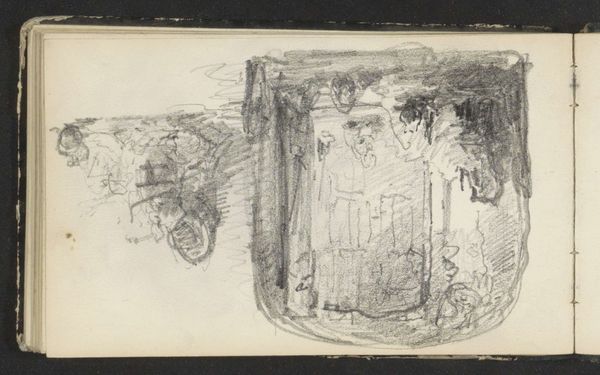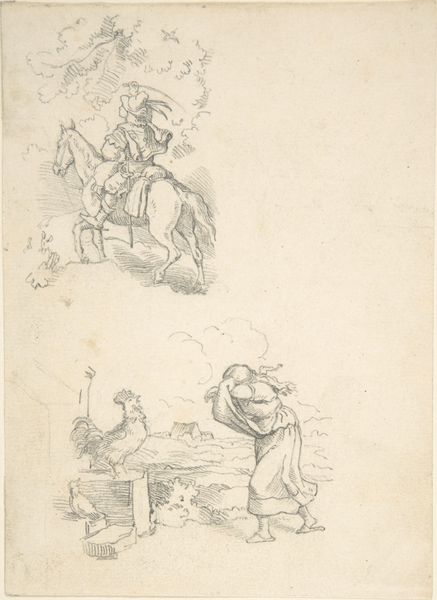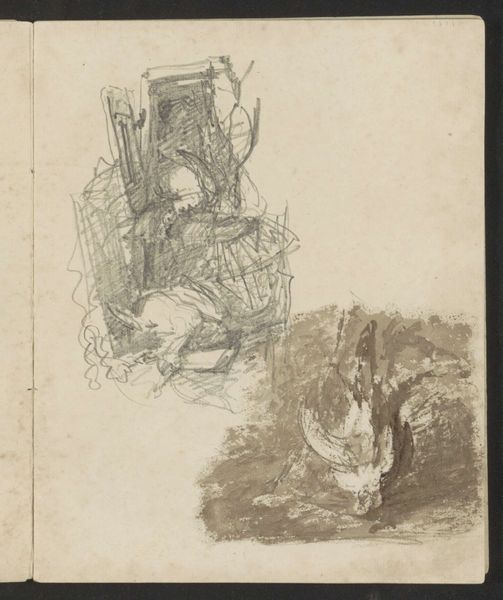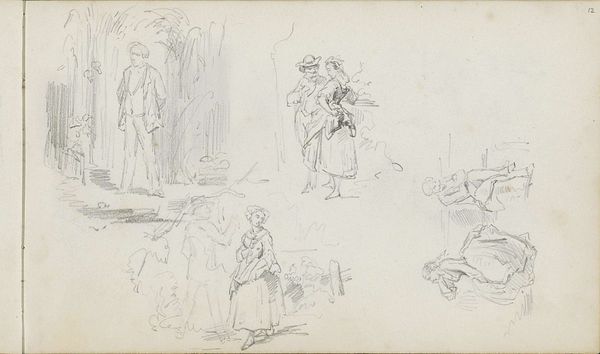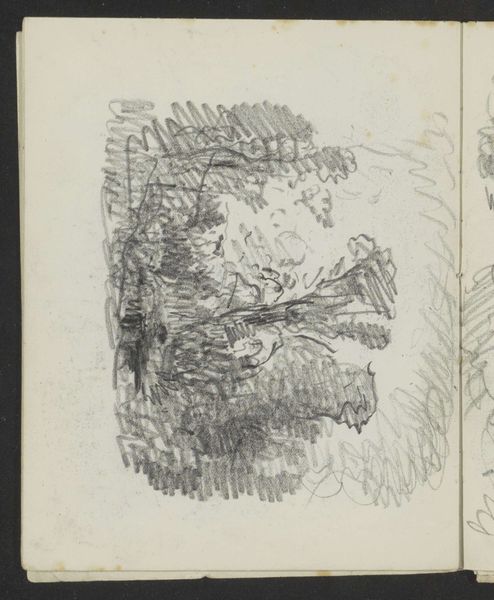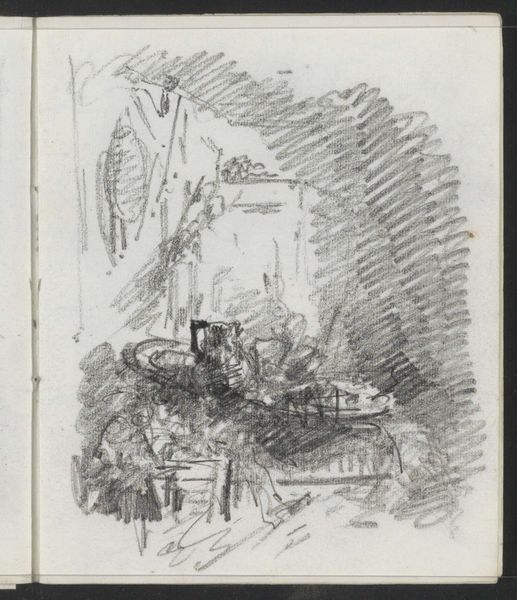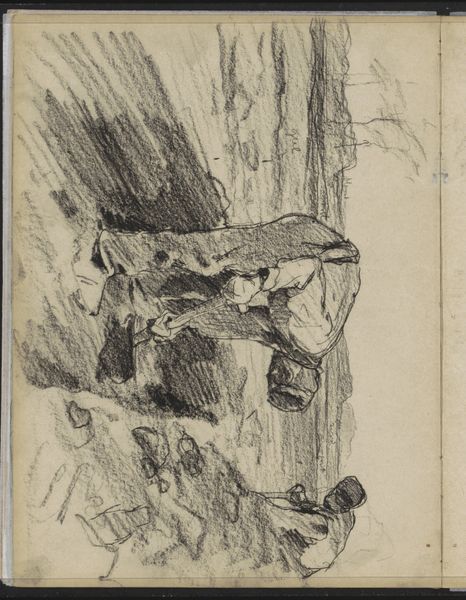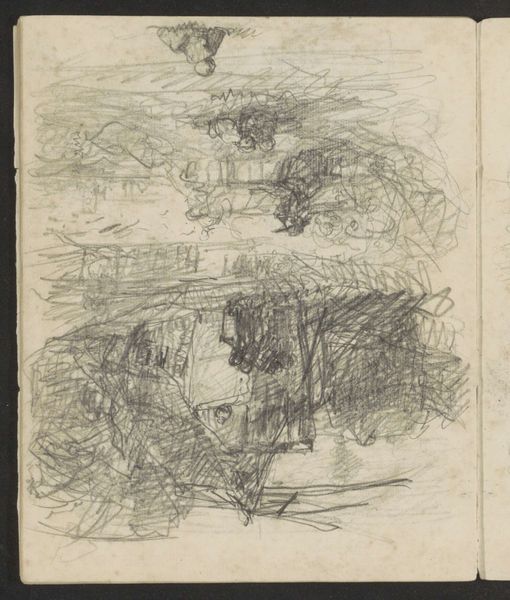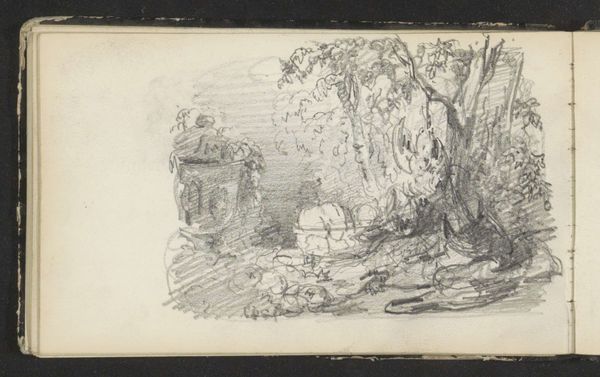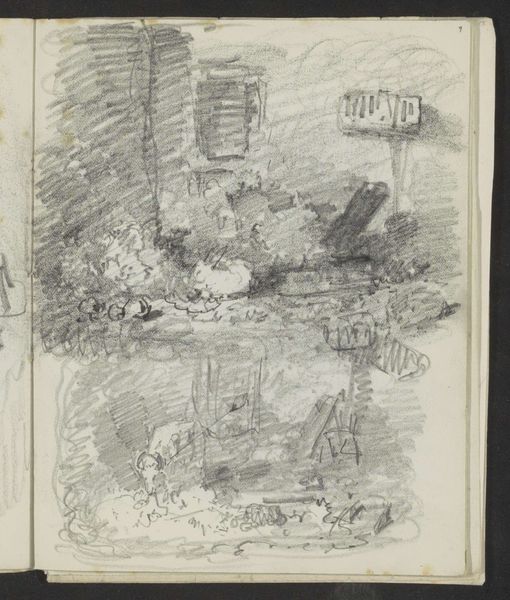
drawing, pencil
#
drawing
#
quirky sketch
#
pen sketch
#
sketch book
#
landscape
#
figuration
#
personal sketchbook
#
sketchwork
#
pen-ink sketch
#
pencil
#
pen work
#
sketchbook drawing
#
storyboard and sketchbook work
#
sketchbook art
Copyright: Rijks Museum: Open Domain
Curator: Welcome. We are standing before Maria Vos's sketchbook page entitled "Stillevens en landschappen met een toren." It's believed these drawings were created sometime between 1834 and 1906, using primarily pencil and pen. Editor: My first impression is one of tentative exploration. There's a charming intimacy here, like peering into someone's private thought process as they experiment with form and composition. The repeated towers carry a sense of almost melancholic contemplation, wouldn’t you say? Curator: Absolutely. Towers throughout art history often symbolize ambition, power, and connection to the divine. They're potent symbols, laden with collective meaning, but what fascinates me is how Vos uses the landscape elements around them. The tower vignettes are positioned in proximity to seemingly random objects like stacks of fruit and platters. Does this perhaps comment on the role and perspective of domesticity versus that of historical, social and institutional dominance represented by these tower structures? Editor: It’s a compelling read. The choice of a simple pencil sketch subverts the grandiose associations usually linked to towers, softening them, bringing them into a relatable, perhaps even vulnerable sphere. There’s also a lovely contrast in technique here. Some drawings are detailed with clear, almost architectural precision, while others feel fleeting, dreamlike. It begs the question of permanence versus impermanence. Curator: I agree. Consider how architectural structures depicted throughout the history of art like the pyramids or Parthenon, have had the distinct function of enshrining ideas in visuality. What does the casual and unfinished rendering of towers tell us about its value system? Is it intentional that the architectural symbols appear dark, gothic, and heavy with scribbles as opposed to the more ethereal depictions of still lifes? Is Vos subtly pushing against a male-dominated aesthetic canon of the time? Editor: Very possible! This fragmented nature might speak to the limited opportunities available to female artists during this period. Sketchbooks allowed space for such private studies of landscape, which in turn could provide women with a level of engagement and creative agency that were restricted. And let’s not overlook the performative and staged nature of the dominant forms of art, especially when they are symbols of state power and the role women played at the time. These pages potentially offered Vos a space of refuge, where artistic freedoms were embraced with uninhibited thought. Curator: A vital insight. In its quiet way, this page embodies resistance. It underscores not only Vos’ artistic journey but also mirrors a wider societal negotiation for visibility and creative liberation. Editor: It certainly gives you a lot to contemplate, doesn’t it? A deceptively simple collection of sketches that really opens up important questions of art, identity, and historical context.
Comments
No comments
Be the first to comment and join the conversation on the ultimate creative platform.
